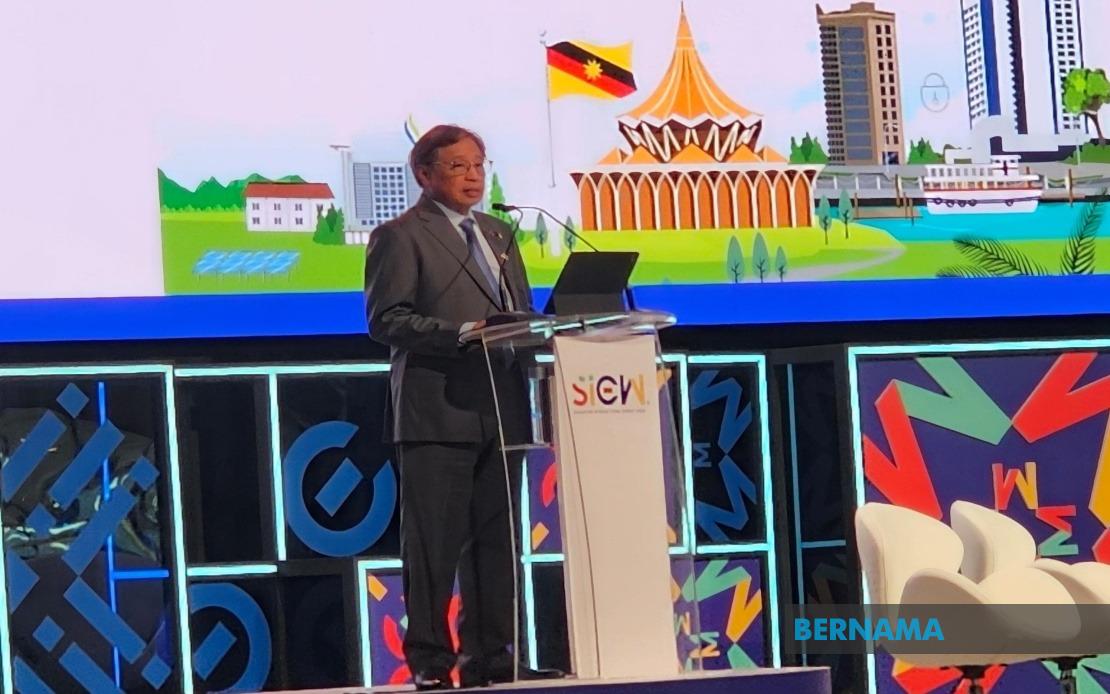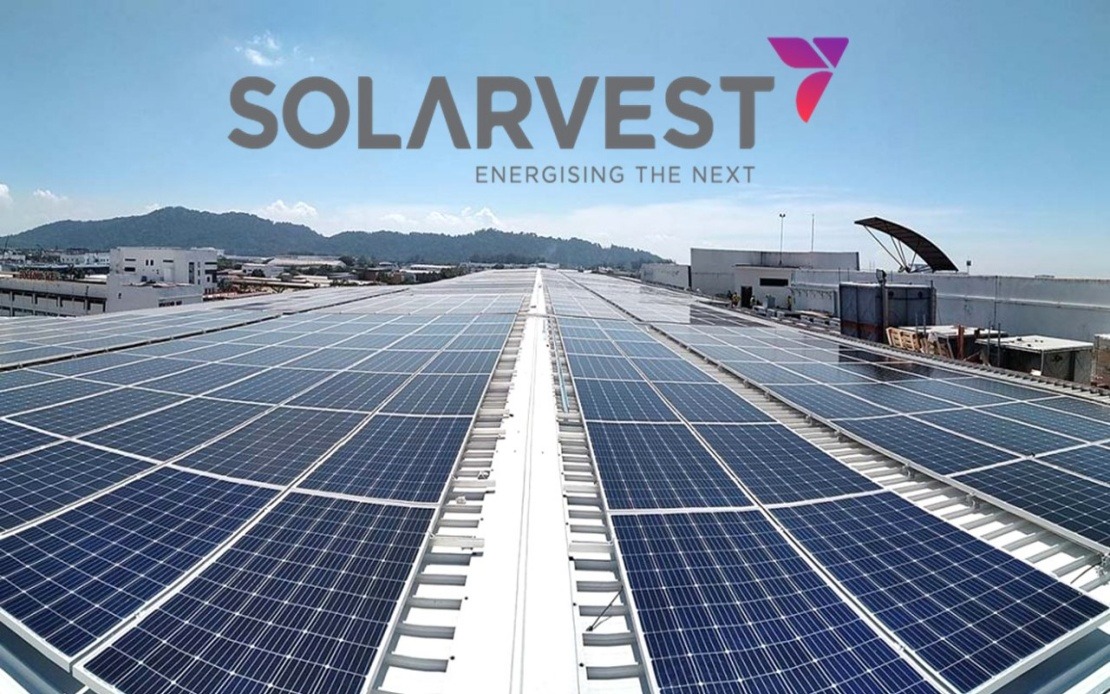News
New Dimension In Environmental Governance

By Dr Mohd Yusoff Ishak
The writer Dr Mohd Yusoff Ishak is a senior lecturer at the Faculty of Forestry and Environment, Universiti Putra Malaysia.
KUALA LUMPUR (Bernama) – The provision of a dedicated ministry to handle the environment portfolio in the new Cabinet line-up announced early last month will hopefully bring a new dimension and changes to environmental governance in Malaysia.
Having realised the importance of integrating the synergies of environmental sustainability and water management, the Cabinet on April 1 agreed to rebrand the Ministry of Environment as Ministry of Environment and Water.
pic-5
Its minister Datuk Tuan Ibrahim Tuan Man said the integration of the environment and water sectors would strengthen the management of the nation’s water ecosystem so as to ensure sufficient and sustainable water resources and supply.
We also hope that the new Ministry of Environment and Water does not disregard the issue of climate change as it is something that has to be tackled prudently for the sake of the people’s well-being and environmental sustainability.
Prior to this, the environmental portfolio was placed under the Ministry of Energy, Science, Technology, Environment and Climate Change.
The Ministry of Environment and Water should continue with the agenda of beefing up environmental conservation efforts by improving the Environmental Quality Act 1974 to provide for more systematic monitoring of pollution and to curb environmental crime more effectively.
The biodiversity, forestry and water sectors – that deal with non-renewable resources – should be placed under the jurisdiction of the Ministry of Environment and Water so that environmental conservation works can be implemented more comprehensively in line with the Sustainable Development Goals (SDG) 2030.
Environmental governance must be improved by upgrading existing environmental policies and stepping up cooperation between the federal and state governments.
Focus must also be given to the coordination, monitoring and evaluation of the effectiveness of any environmental conservation policy or programme to ensure it is evidence-based.
To summarise, the implementation of the environmental conservation agenda requires close cooperation and integration across ministries, as well as monitoring right down to the grassroots level.
pic-3
There is a long list of issues awaiting speedy action by the Ministry of Environment and Water. It includes issues related to river pollution, dumping of toxic waste, plastic waste imports and electronic waste. Another pressing issue is improving the environmental impact assessment procedures.
The Roadmap Towards Zero-Single Use Plastics 2018-2030 needs to be reviewed in terms of consumer and industry response and the impact of its implementation as it will be enforced nationwide by 2022.
The irony is that the conventional plastic bag makes up the biggest proportion of solid wastes in this country but the management of solid wastes is placed under the jurisdiction of the Ministry of Housing and Local Government.
Another matter that deserves more serious attention and must be expedited is the drafting of legislation to address cross-border pollution and climate change.
The time has also come to make improvements to the National Environmental Policy 2002 with the latest inputs by all the parties concerned. This is necessary as environmental and natural resource inventories and audits provided for under the policy were not carried out successfully.
It is also frustrating when housing developers do not heed recommendations to not only consider the economic value of their projects but also the environmental and social impact.
The Climate Change Policy 2009 also requires a breath of fresh air so that it remains relevant and can be used as a guide by government agencies, industries, communities and stakeholders in the face of challenges relating to climate change.
It is frustrating to note that the policy’s objective of creating a set of criteria and indices for sustainable socioeconomic development has yet to be realised.
What Malaysia really needs to do now to minimise the impact of climate change is to continuously upgrade its capacity (to address climate change) with the aid of mitigation measures.
We also welcome minister Tuan Ibrahim’s intention to put in place conservation of water resources, especially rivers, as a key performance indicator for the ministry.
pic-2
The forced shutdown of four water treatment plants in Selangor for several hours on March 17 due to odour pollution was the first challenge he had to face as a minister.
In its follow-up action, on March 19 the Selangor Department of Environment issued 30 compounds amounting to a total of RM60,000 to the owner of the factory that caused the odour pollution.
The benchmark for environmental conservation should lean towards the 17 targets set out under SDG 2030 that are in line with Malaysia’s aspirations to head towards sustainable development, which will be the basis of its economic growth, social well-being, welfare and environmental protection programmes.
Malaysia’s performance in attaining these goals must be monitored through a beefed-up Environmental Quality Council, as stated under Section 4 of the Environmental Quality Act. The council can be strengthened by increasing the number of members representing Orang Asli groups and state governments to ensure that environmental governance takes on a more focused, inclusive and harmonious approach that also takes into consideration the nation’s constraints.
State governments may have jurisdiction over land matters but they face constraints in terms of expertise and funds in comparison with the federal government’s resources.
pic-4
The Sungai Kim Kim (in Pasir Gudang, Johor) pollution episode is a good example as it showed that the state government and federal agencies were interdependent, and also proved the need to enhance capacity to prevent the recurrence of such incidents.
There is also a great need to increase the capacity of enforcement agencies through the use of drones and the application of big data analytics and environmental forensics.
It is not too much for this writer to suggest that it is time to use offensive strategies to nab environmental crime suspects although it will incur extra costs for DOE.
To expedite the identification of contaminants as proof to convict polluters in court for offences relating to pollution, the field of environmental forensics has to be developed by injecting funds into technological and cross-disciplinary innovations and big data analytics.
DOE must also monitor the dumping of the new generation of contaminants such as microplastics and endocrine-disrupting chemicals. Hence, its staff must also master new technologies such as the use of blockchain technology, smart sensors and artificial intelligence.
DOE must also step up its collaboration with local universities, particularly in the field of environmental forensics, through the sharing of funds and resources.
(The views expressed in this article are the writer’s own)
Edited by Rema Nambiar
BERNAMA
Other News
Sarawak Lepasi Sasaran Kapasiti Gabungan Tenaga Boleh Baharu Tahun Ini - Abang Johari

Oleh Nur Ashikin Abdul Aziz
SINGAPURA, 21 Okt (Bernama) -- Sarawak mencapai 62 peratus sasaran campuran kapasiti tenaga boleh baharu (TBB) tahun ini, melepasi sasaran 60 peratus yang digariskan dalam Strategi Pembangunan Pasca COVID-19 (PCDS) 2030.
Sarawak Pacu Pertumbuhan Tenaga Boleh Diperbaharui Untuk Manfaat ASEAN - Premier

SINGAPURA, 21 Okt (Bernama) -- Sarawak komited menyokong peralihan tenaga boleh diperbaharui di Asia Tenggara dengan memanfaatkan potensinya sebagai "Bateri ASEAN," yang akan membekalkan tenaga bersih menerusi sambungan Grid Kuasa Borneo dan ASEAN.
Belanjawan 2025 Percepat Peralihan Kepada Tenaga Bersih - Solarvest

KUALA LUMPUR, 19 Okt (Bernama) -- Belanjawan 2025 merupakan satu langkah ke arah mempercepat peralihan kepada tenaga bersih di Malaysia, kata Solarvest Holdings Bhd.
© 2025 BERNAMA. All Rights Reserved.
Disclaimer | Privacy Policy | Security Policy This material may not be published, broadcast,
rewritten or redistributed in any form except with the prior written permission of BERNAMA.
Contact us :
General [ +603-2693 9933, helpdesk@bernama.com ]
Product/Service Enquiries [ +603-2050 4466, digitalsales@bernama.com ]